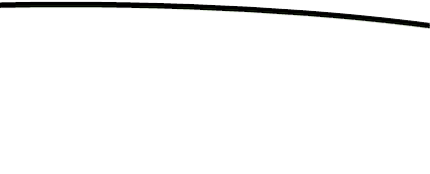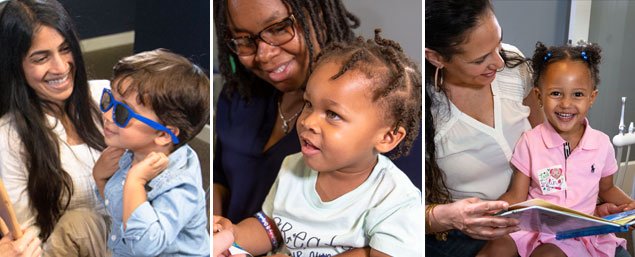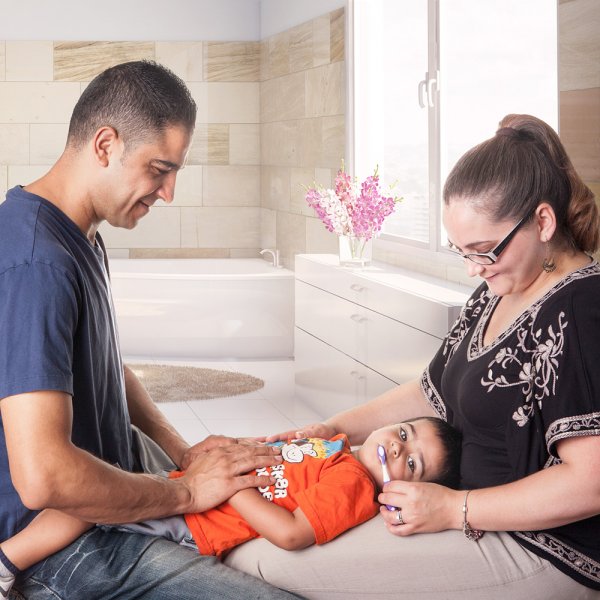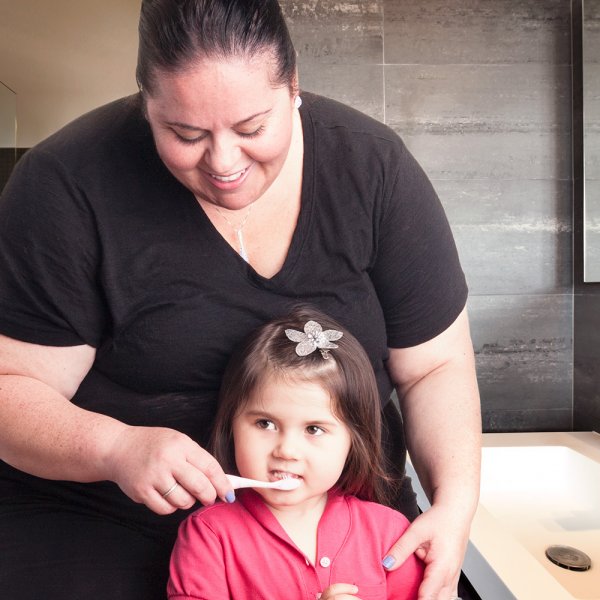It Starts with You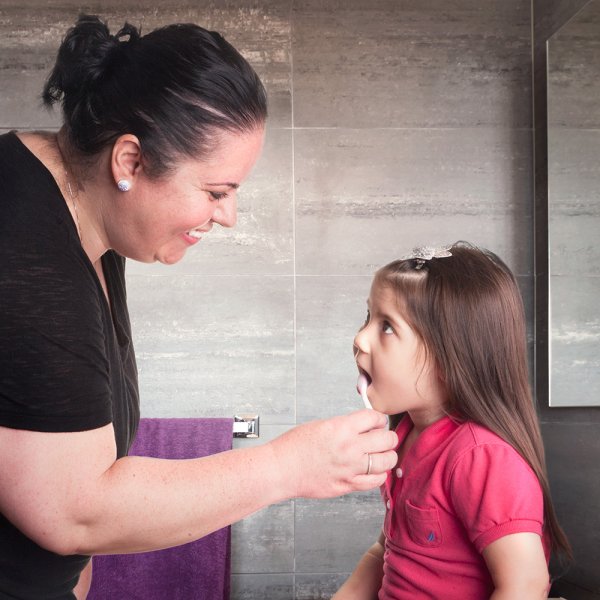
Parents and caregivers are a child’s first teachers in life. Your child will learn how to care for her teeth by watching you. That’s why it is important for you to show her good brushing habits by practicing them yourself. Floss once a day and brush your teeth with a toothbrush and fluoride toothpaste two times a day for two minutes each time. Let your child watch you as you clean your teeth.
Good eating habits are important for your teeth too. Eat a healthy diet that is low in sugar and drink plenty of water instead of soda, juices, and sports drinks.
When your child sees you using good habits, she will copy and do as you do.
How to Take Care of Your Child’s Growing Teeth
Here is a guide to help you know what to do at every stage of your child’s life.
Your baby does not have any teeth yet, but still needs to have a clean mouth. Soon after your baby is born, get in the habit of cleaning her mouth.
To clean your baby’s mouth:
-
Lay your baby in your lap with the baby’s head close to your chest so that you can see into her mouth.
-
Clean her gums by gently rubbing them with a clean, damp washcloth, a piece of gauze, or a terrycloth finger cot, which is a little cloth made specially to fit over your finger. Be sure to clean baby’s upper and lower gums.
-
Follow these steps after every feeding.
-
Your baby’s teeth will start coming in now. You can keep cleaning them the way you did before, or you can switch to an age-appropriate toothbrush. To determine if the size of the toothbrush is right for your baby, check the age range on the package.
-
Use a tiny smear of fluoride toothpaste on the toothbrush. The amount of toothpaste should be very small – only the size of a grain of rice.
-
Brush your child’s teeth two times a day for two minutes each time.
-
Floss in between your child’s teeth once a day.
-
If your child must have a drink between meals, at naptime or bedtime, put only water in the bottle or sippy cup.
-
Once your baby’s first teeth start coming in, make an appointment with a dentist for a simple checkup.
-
Your child is now ready to use a pea-sized amount of toothpaste on a toothbrush.
-
To determine what size toothbrush your child needs, check the age range on the package.
-
Show your child how you brush your teeth and encourage her to practice brushing her own teeth.
-
Make sure to brush her teeth for her after she practices to make sure no spots were missed. Children are not able to brush their teeth well enough on their own at this age.
-
Brush your child’s teeth two times a day for two minutes each time. To make this activity fun for your child, sing a song or play your child’s favorite music for two minutes.
-
Floss in between your child’s teeth once a day. Encourage her to practice flossing her own teeth.
-
Avoid giving your child sugary drinks like milk, sports drinks, or juice in between meals. Offer her water instead.
-
Offer tooth-healthy meal and snack options from the basic food groups.
-
Your child should still be using only a pea-sized amount of toothpaste on a toothbrush.
-
Make sure she is using the right sized toothbrush by checking the age on the package.
-
Teach your child how to floss in between her teeth. Make sure she does this once a day.
-
Continue to model good habits for your child by brushing and flossing your own teeth every day.
-
Once your child is about 8 years old, she is ready to brush her own teeth without your help. Younger children still need you to make sure all their teeth are clean.
-
Offer water to drink in between meals instead of milk, juice or sports drinks.
-
Make sure your child is eating a healthy diet with a variety of foods from the basic food groups.
If you have any concerns about your child’s teeth, ask your child’s dentist or pediatrician right away.
Making sure your child’s teeth are healthy will save them from pain and make sure that they are on the path to healthy smiles for a lifetime!
